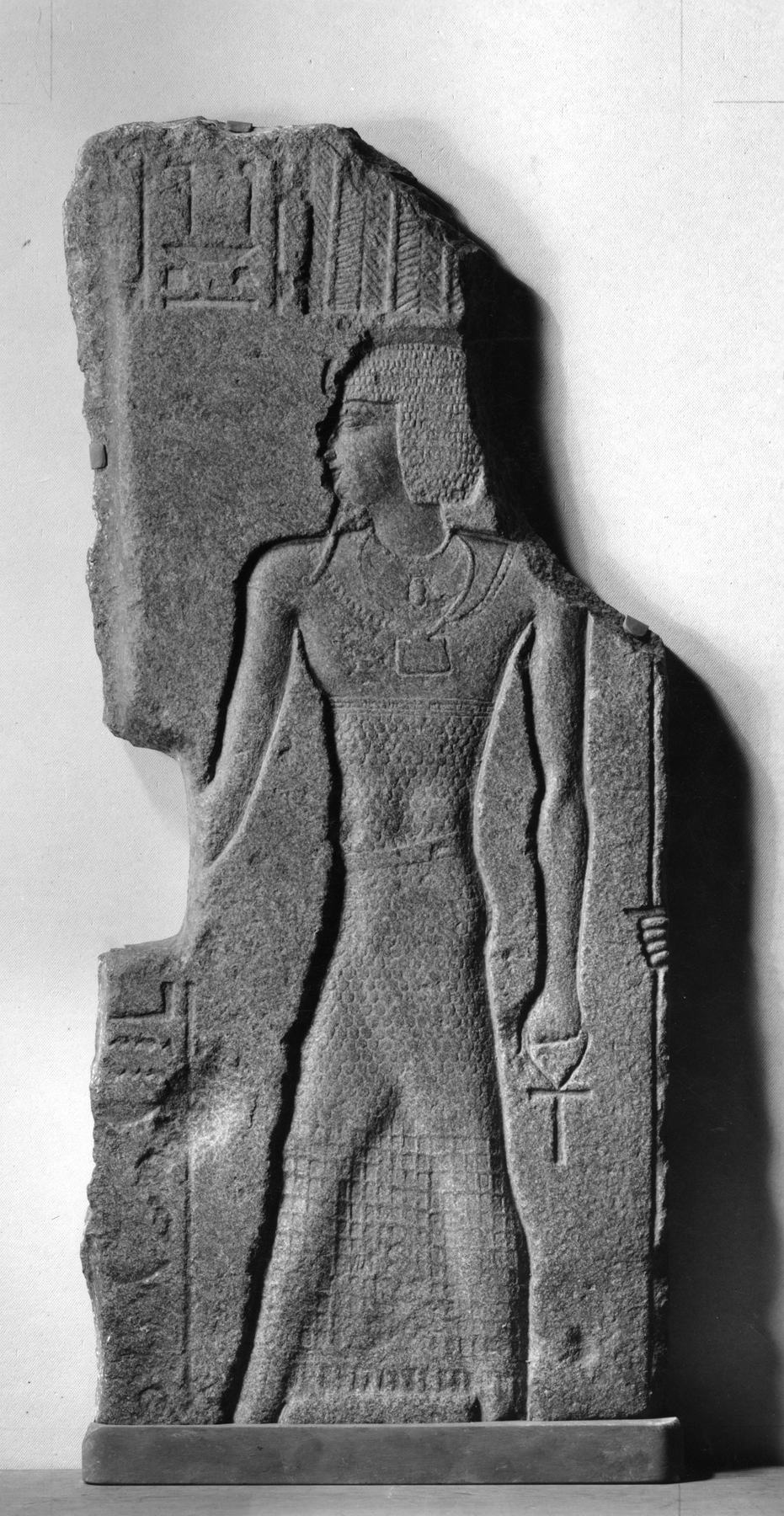Relief with Onuris-Shu
(Ancient Egypt and Nubia )
Here, the god Onuris-Shu holds an ankh, the hieroglyphic sign for life, in one hand and a was scepter, an animal-headed staff symbolizing power, in the other. Four plumes rise from a circlet atop his short wig, and a protective uraeus (sacred cobra) rises from his brow. The god wears a long, sheer, patterned garment, a divine beard, a wesekh, or beaded broad collar, and a necklace with a shrine-shaped pendant. A portion of the hand and scepter of another divine figure remain behind Onuris-Shu. The inscriptions suggest that the relief was once part of a scene of adoration.
Provenance
Provenance (from the French provenir, 'to come from/forth') is the chronology of the ownership, custody, or location of a historical object. Learn more about provenance at the Walters.
Dikran Kelekian, New York and Paris, [date of acquisition unknown], by purchase [as from temple near Suez]; Henry Walters, Baltimore, 1925, by purchase; Walters Art Museum, 1931, by bequest.
Conservation
| Date | Description | Narrative |
|---|---|---|
| Examination | examined for condition |
Geographies
Egypt, Samannud (Place of Origin)
Measurements
51 1/2 x 22 1/2 in. (130.8 x 57.1 cm)
Credit Line
Acquired by Henry Walters, 1925
Location in Museum
Accession Number
In libraries, galleries, museums, and archives, an accession number is a unique identifier assigned to each object in the collection.
In libraries, galleries, museums, and archives, an accession number is a unique identifier assigned to each object in the collection.
22.120


